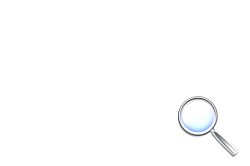Reading the similarity report
Once a file is uploaded, iThenticate scans it and produces a report identifying ‘matching’ text and sources. It gives an overall percentage of text which matches previously published material. There is no ‘correct’ percentage figure to aim for. iThenticate does not identify whether matching text is plagiarised. Only an informed researcher can make that judgement on a case-by-case basis by considering the iThenticate report carefully.

To open the Similarity Report, click on the percentage. The report will resemble the example on the right (click to enlarge the image) if it is the first time you have logged in. Otherwise the view mode will be that same as last time you used the software.
The presence of matching text does not necessarily indicate plagiarism. iThenticate may have highlighted direct quotes that are attributed correctly or standard or generic phrases (see the example to the right). Interpreting the Similarity Report using your informed judgement as a researcher is key to identifying and correcting any problem text. Review each section of highlighted matching text. Some sections will require more attention and thought than others.
Download Interpreting iThenticate Reports: a Guide for Researchers [DOC 708KB] for detailed information about percentages, similarity reports, and other ways iThenticate can be useful which include reference checking, copyright compliance, and proof-reading.
Some general principles to keep in mind are:
- there is no ‘correct’ minimum or maximum percentage of matching text
- a high percentage of matching text does not necessarily indicate plagiarism or any other form of academic dishonesty, and a low percentage does not indicate that the document is free of problems
- different disciplines and genres of academic writing have varied expectations and conventions about how much direct quoting is appropriate
- detecting plagiarism (inadvertent or deliberate) is not the only use for iThenticate reports, they can also assist with proof-reading, reference checking, and copyright compliance.